Urban Planning Students investigated two neighborhoods in Malmö in terms of the transportation network and transportation behavior. They analyzed the transportation network and infrastructure for pedestrians, bicycles, public transportation, private vehicles, and other users, the residents’ behaviors and demands, and the current city plans, including new housing and transportation projects and land-use distribution. The methods and data used in their investigation and analysis include site observation, document review, interview, or survey, spatial analysis using GIS data and Open Street Data and Google Maps, and Space Syntax. According to the theories, they discussed the quality of mobility and accessibility and proposed strategic and detailed suggestions toward sustainable transportation. Below you can see the reports. Click on the titles/photos to download and read the reports.
Supervisors of the group Project: Elnaz Sarkheyli, Chiara Vitrano
Teaching Team in the Course BY260E, VT2022: Elnaz Sarkheyli, Robert Hrelja, Chiara Vitrano, Zahra Hamidi, Helena Bohman, Hoai Anh Tran, Guy Baeten
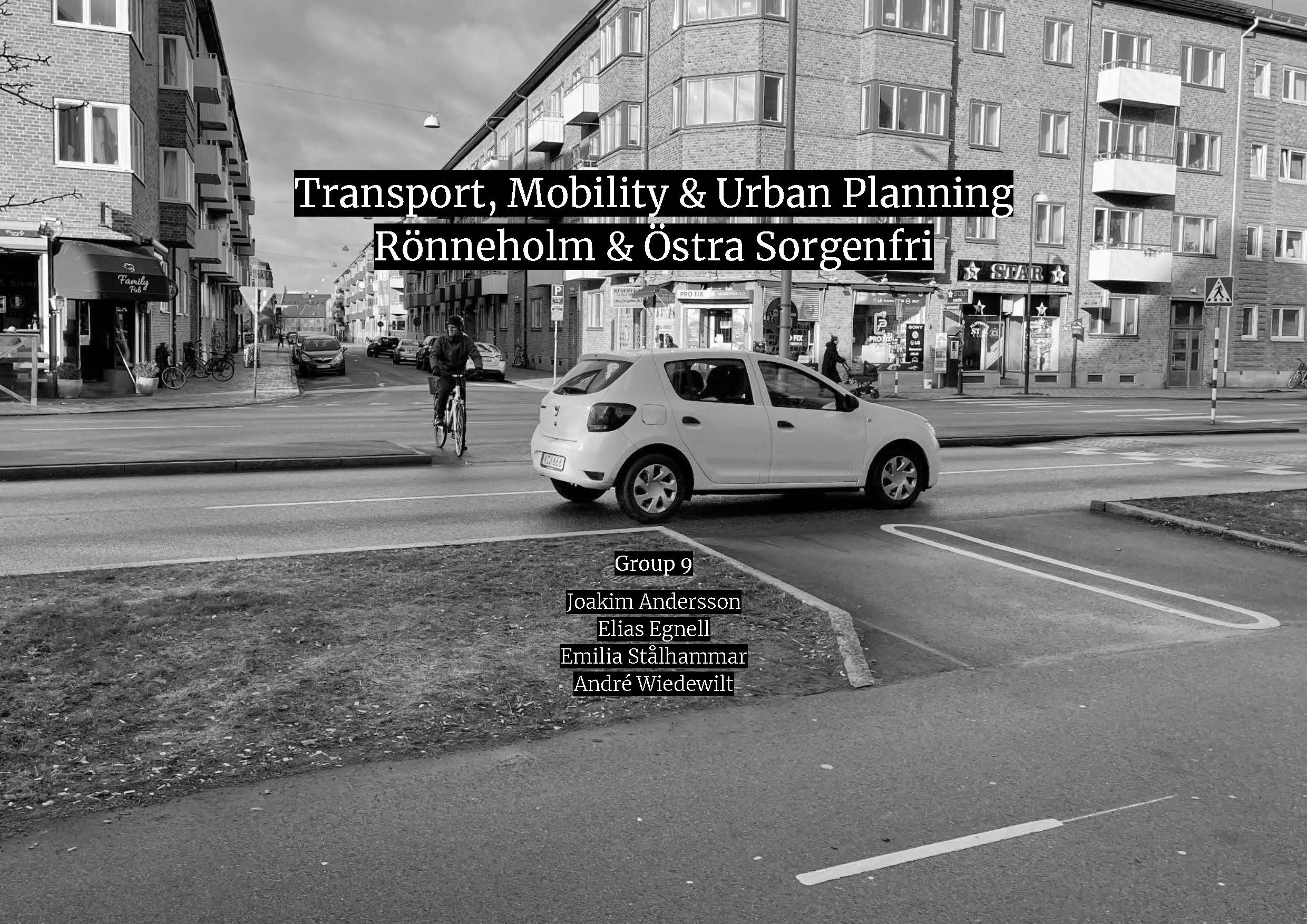 |
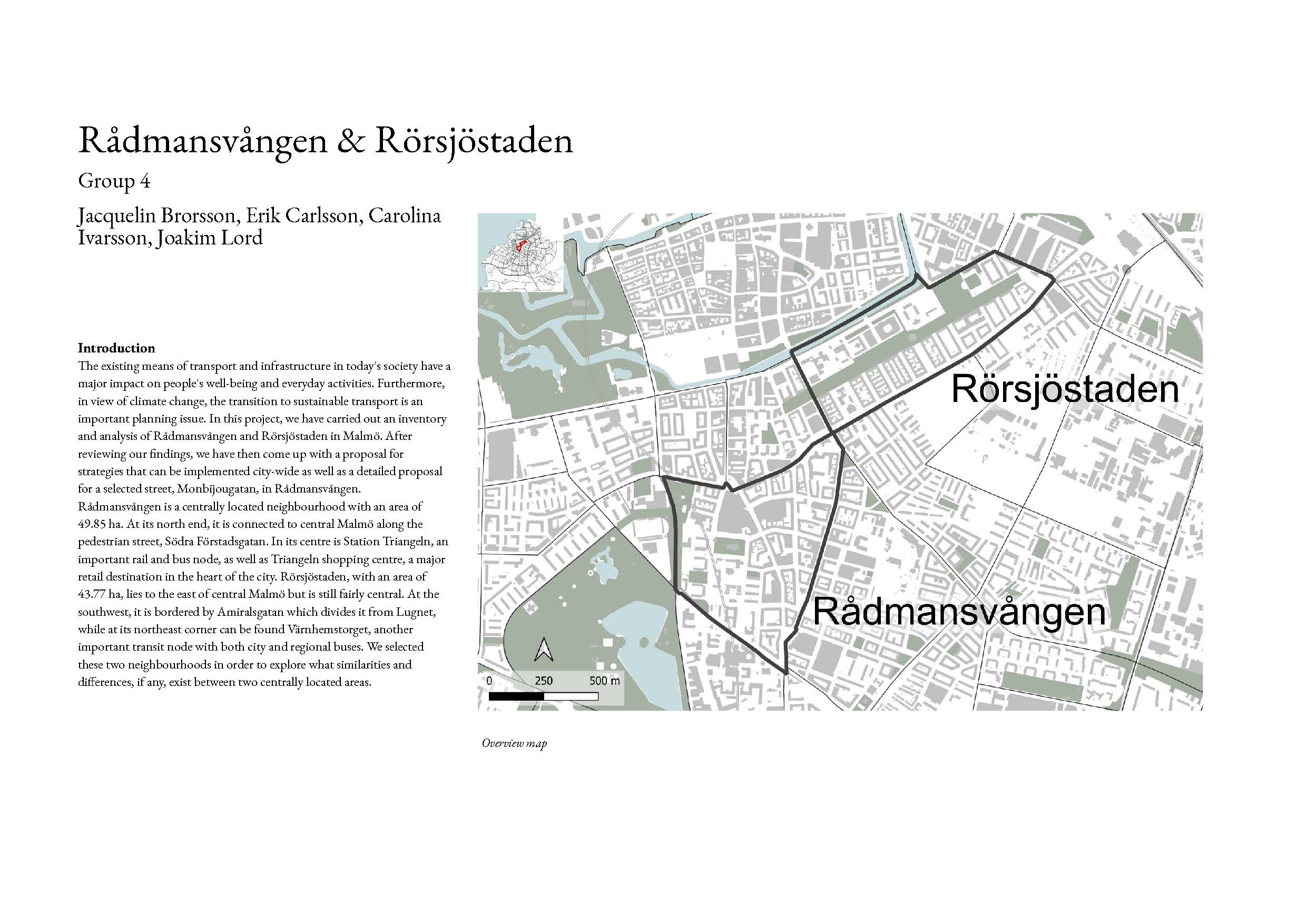 |
| Group 9: Toward a more sustainable and less car-dependent transport network in central Malmö
Summary: An inventory and analysis of two districts in central Malmö with a resulting proposal to develop their access to a more sustainable and less car dependent transport network. |
Group 4: From chaos to calm: an inventory and analysis of Rådmansvången and Rörsjöstaden.
Summary: Using various methods, including field observations, geospatial data analysis, and surveys, this inventory seeks to understand the particulars of these centrally located neighbourhoods to answer the question, What transport-related concerns do residents have, and how can we make improvements? |
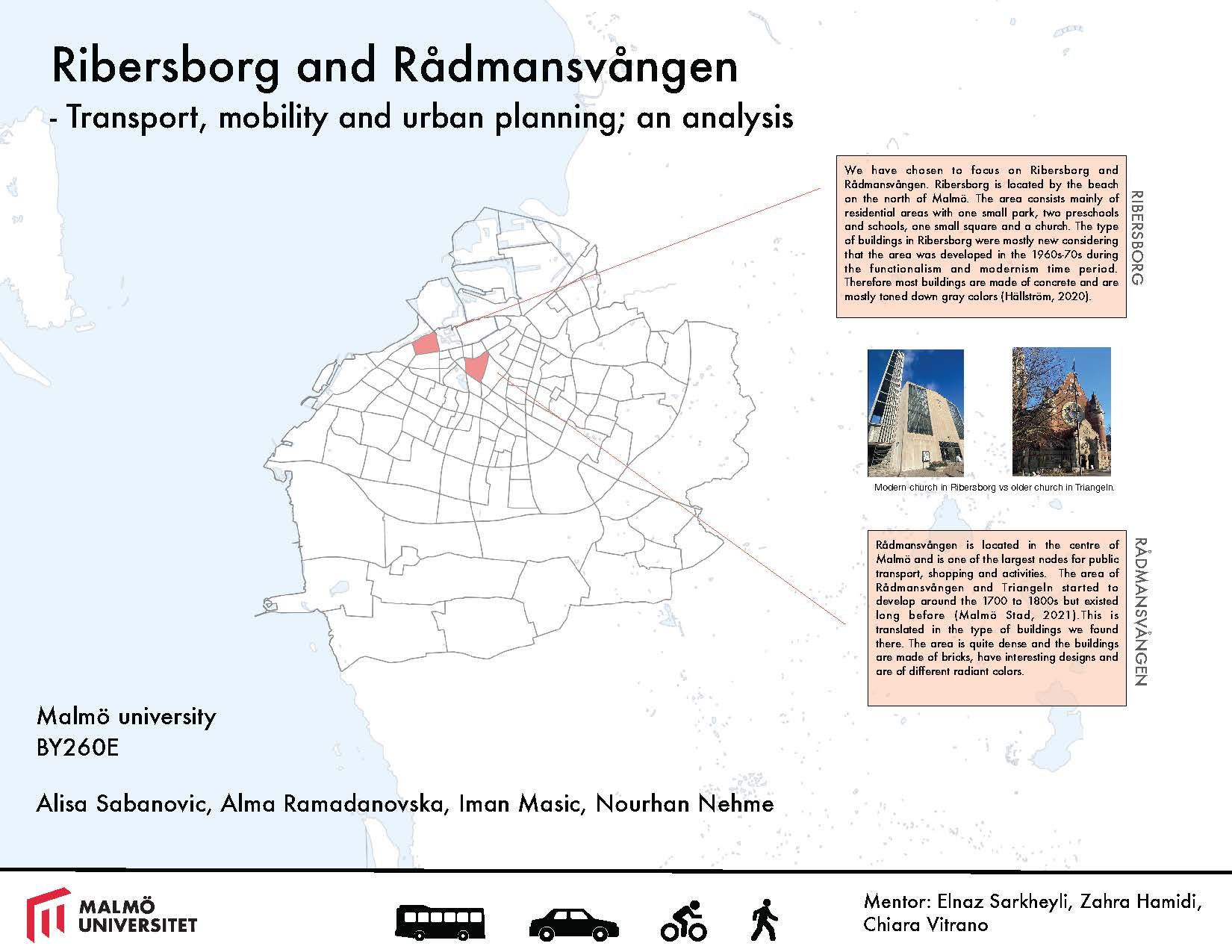 |
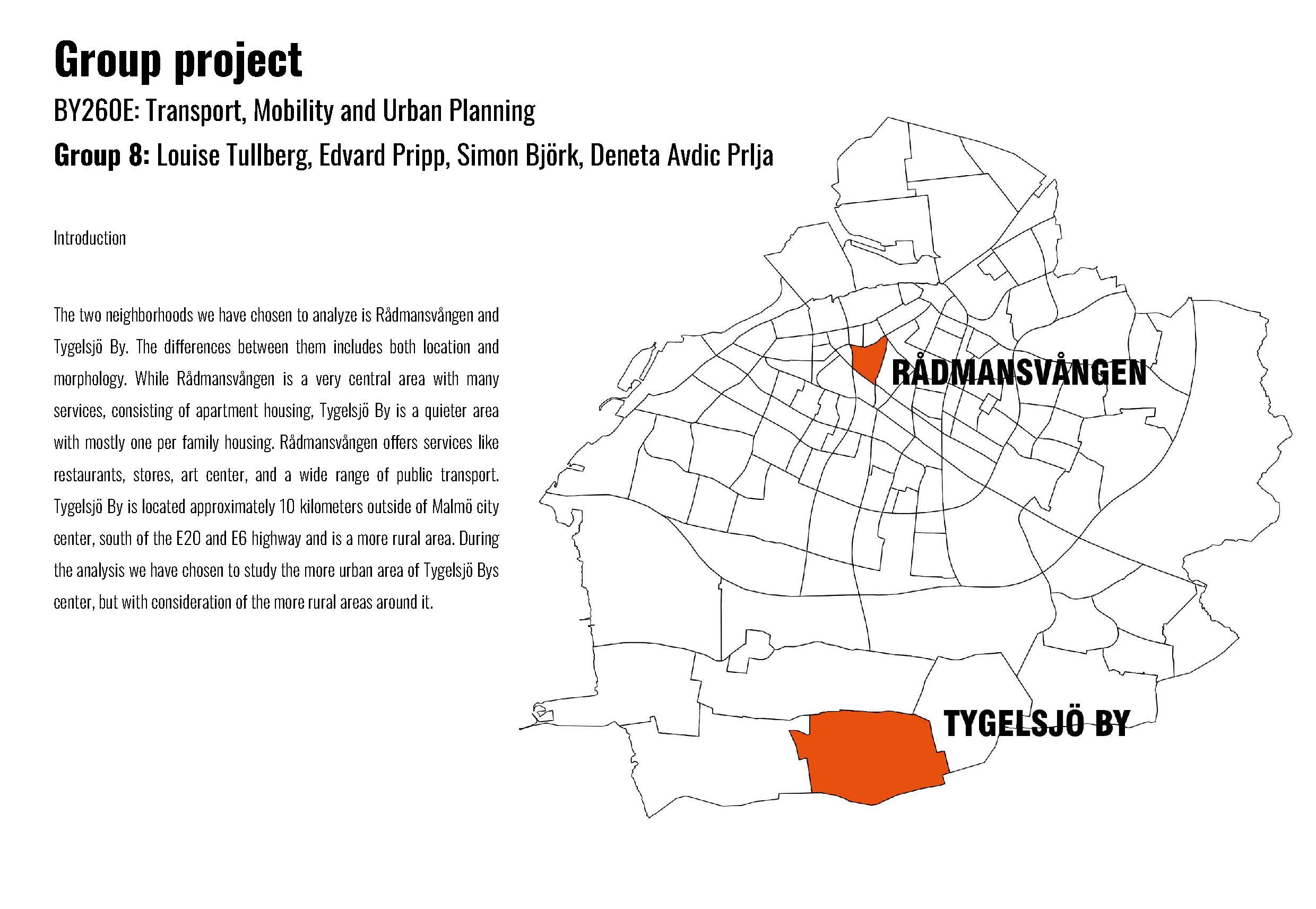 |
| Group 10: Analysis of and proposal for change for Ribersborg and Rådmansvången in Malmö.
Summary: From the research of the two areas we concluded that Ribersborg is a more modern residential area while Rådmansvången is more of an older commercial area. Therefore we put two proposals in Rådmansvången, one is to reduce parking spaces and the other is to redesign an already existing bike path to in a safer way. |
Group 8: A smaller Malmö
Summary: Malmö is already a small city, but still, people tend to use the car for transport. To make the bike an easier choice we propose better connected bike lanes within the city center, as well as making it possible to take the bike to and from Malmös suburbs. An analysis and proposal for change in Rådmansvången and Tygelsjö By. |
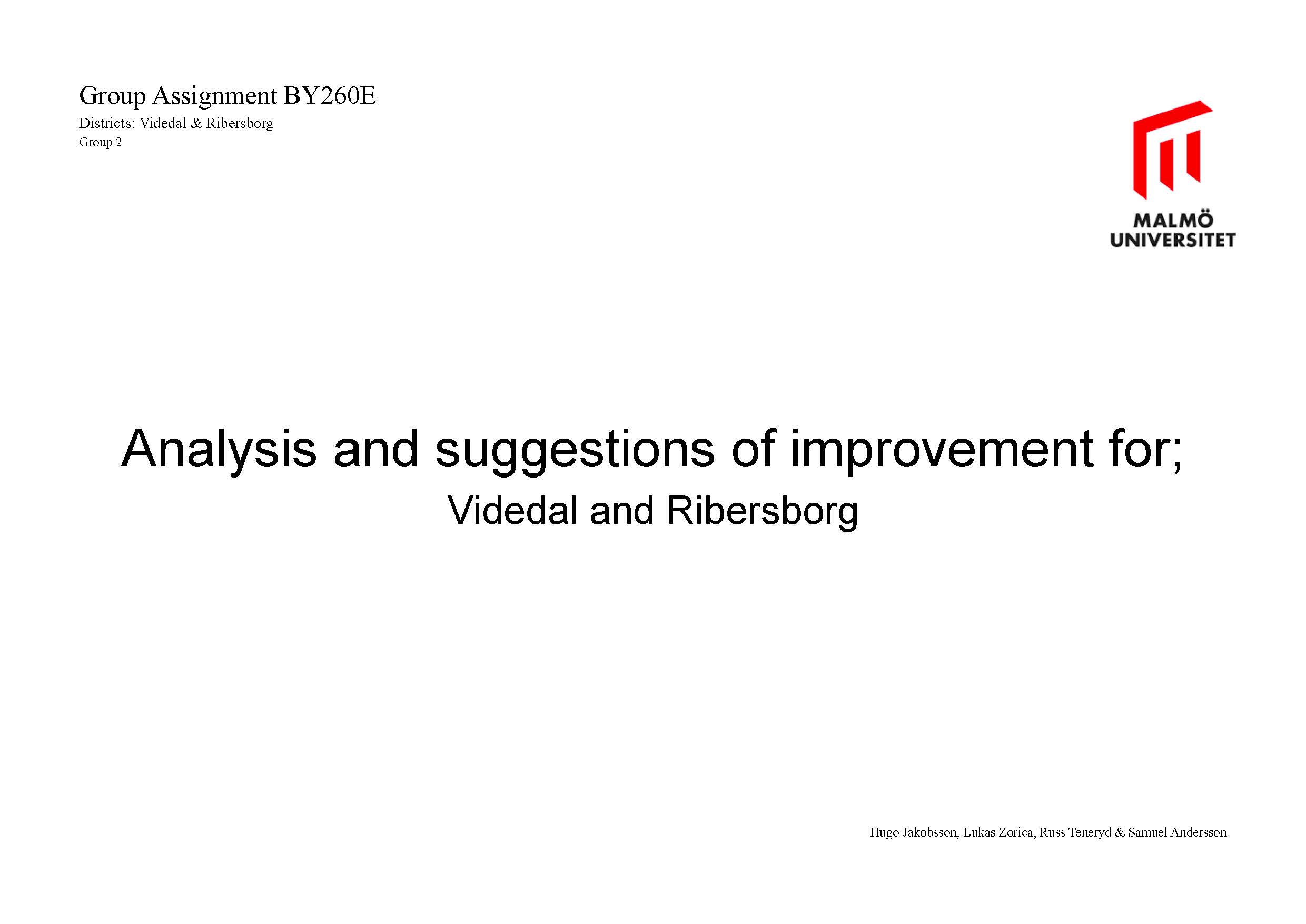 |
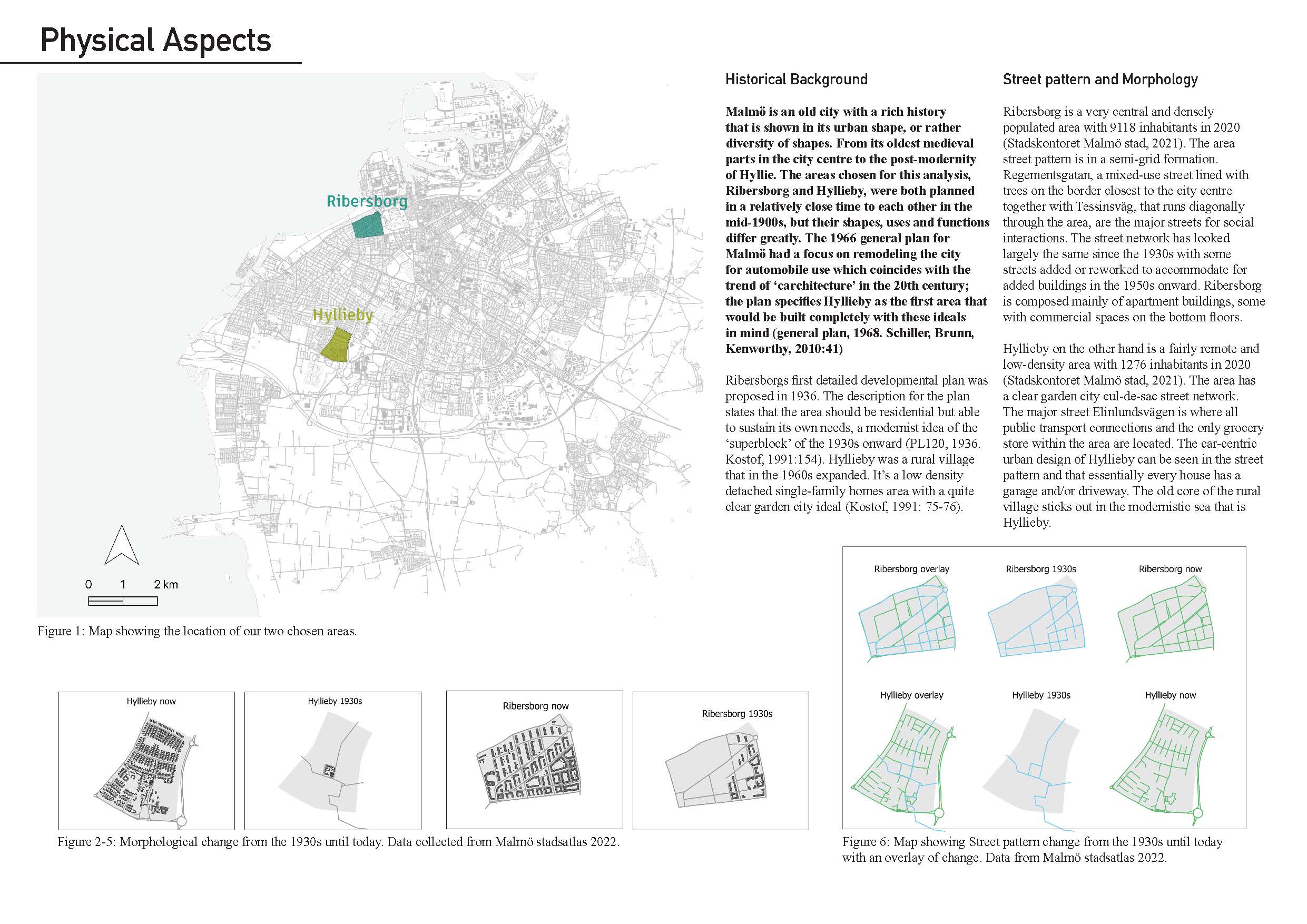 |
| Group 2: Videdal and Ribersborg, in Malmö
Summary: Through an inventory and analyisis this project compares Videdal and Ribersborg, in Malmö. Based on the findings, the report then suggests multiple ways to aim for sustainable transportation within the areas alongside a more detailed plan specifically for Videdal that has the same goal. |
Group 3: Hyllieby and Ribersborg |
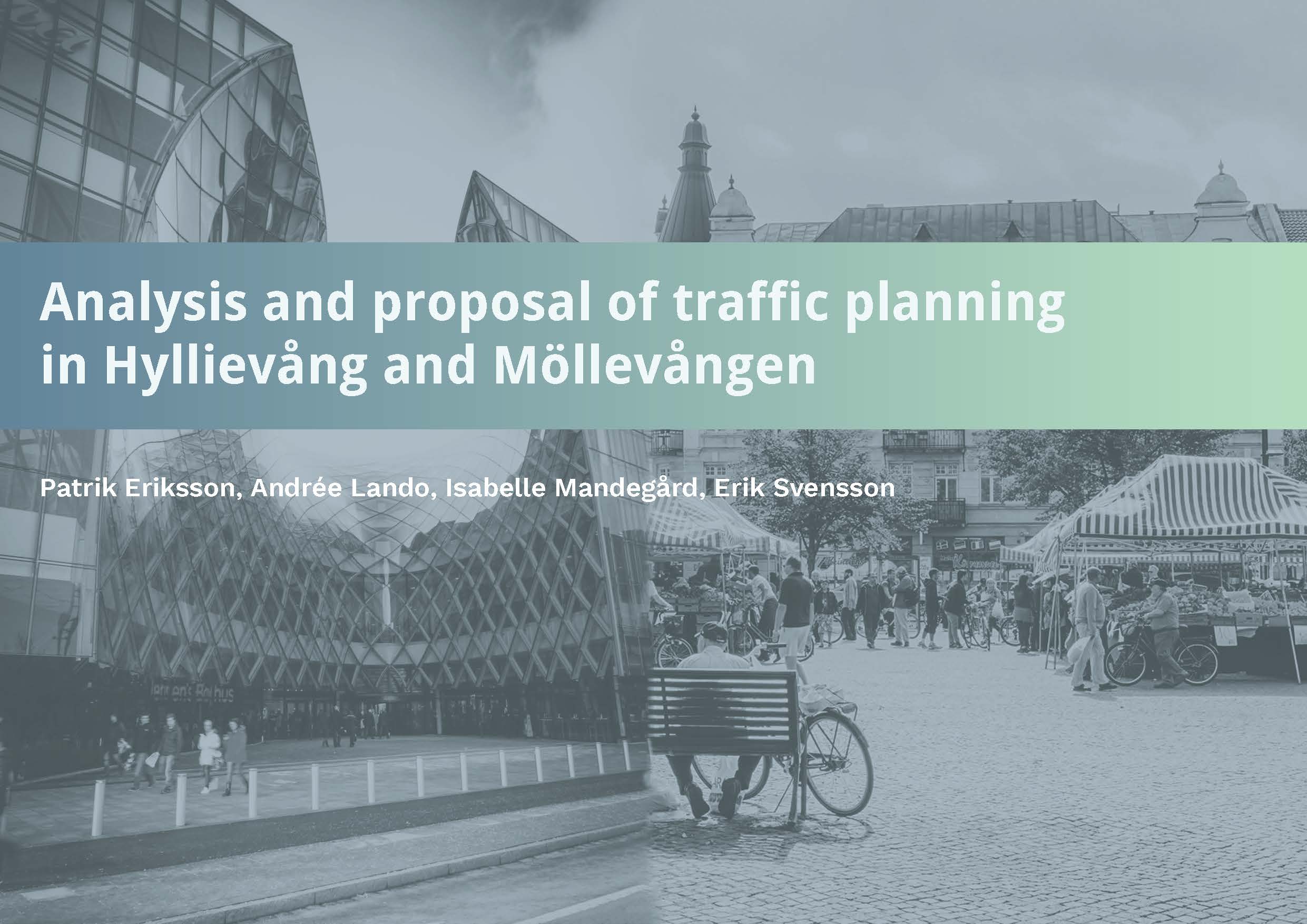 |
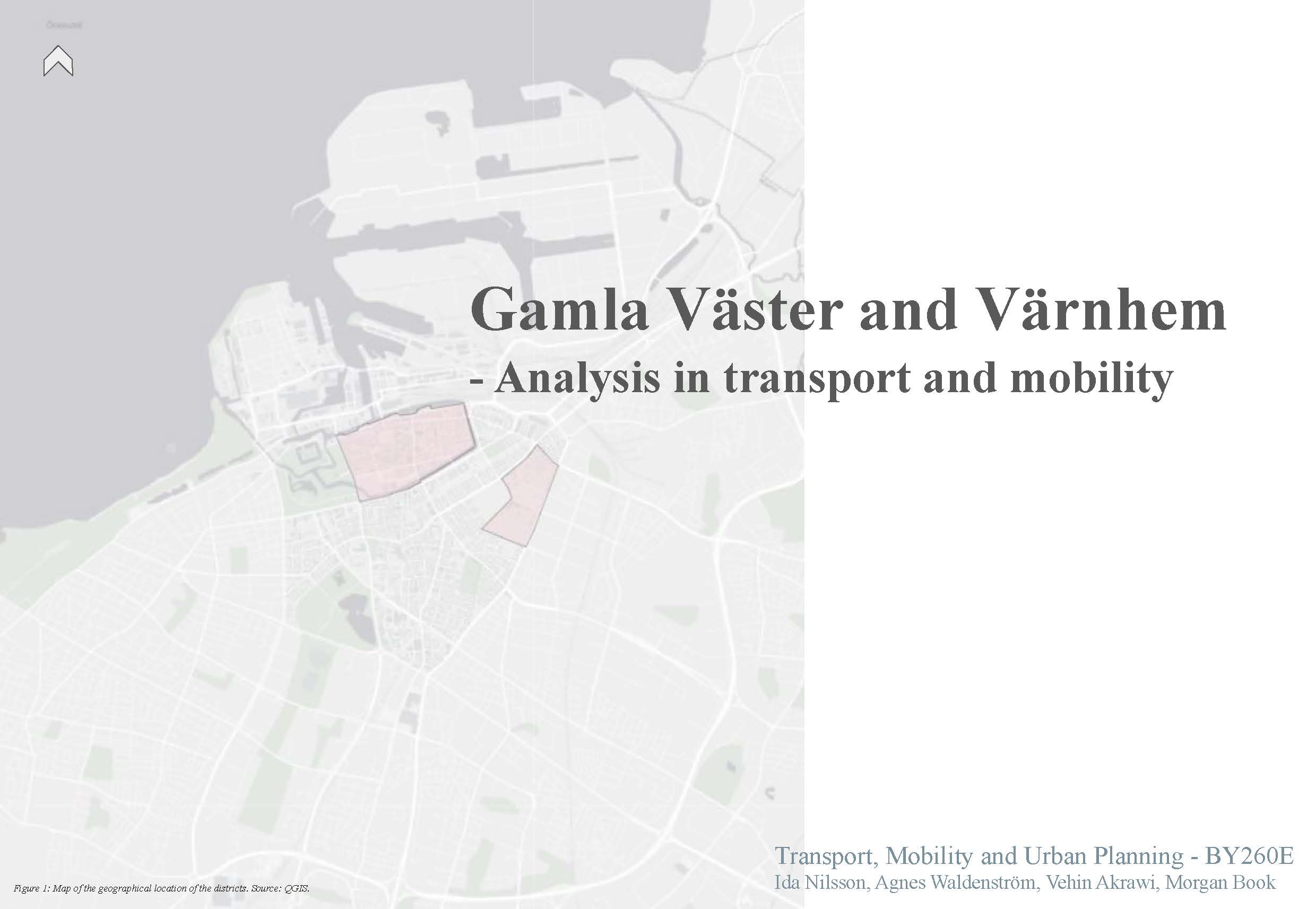 |
| Group 5: Analysis and Proposal of Traffic Planning in Hyllievång and Möllevången
|
Group 1: Gamla Väster and Värnhem |
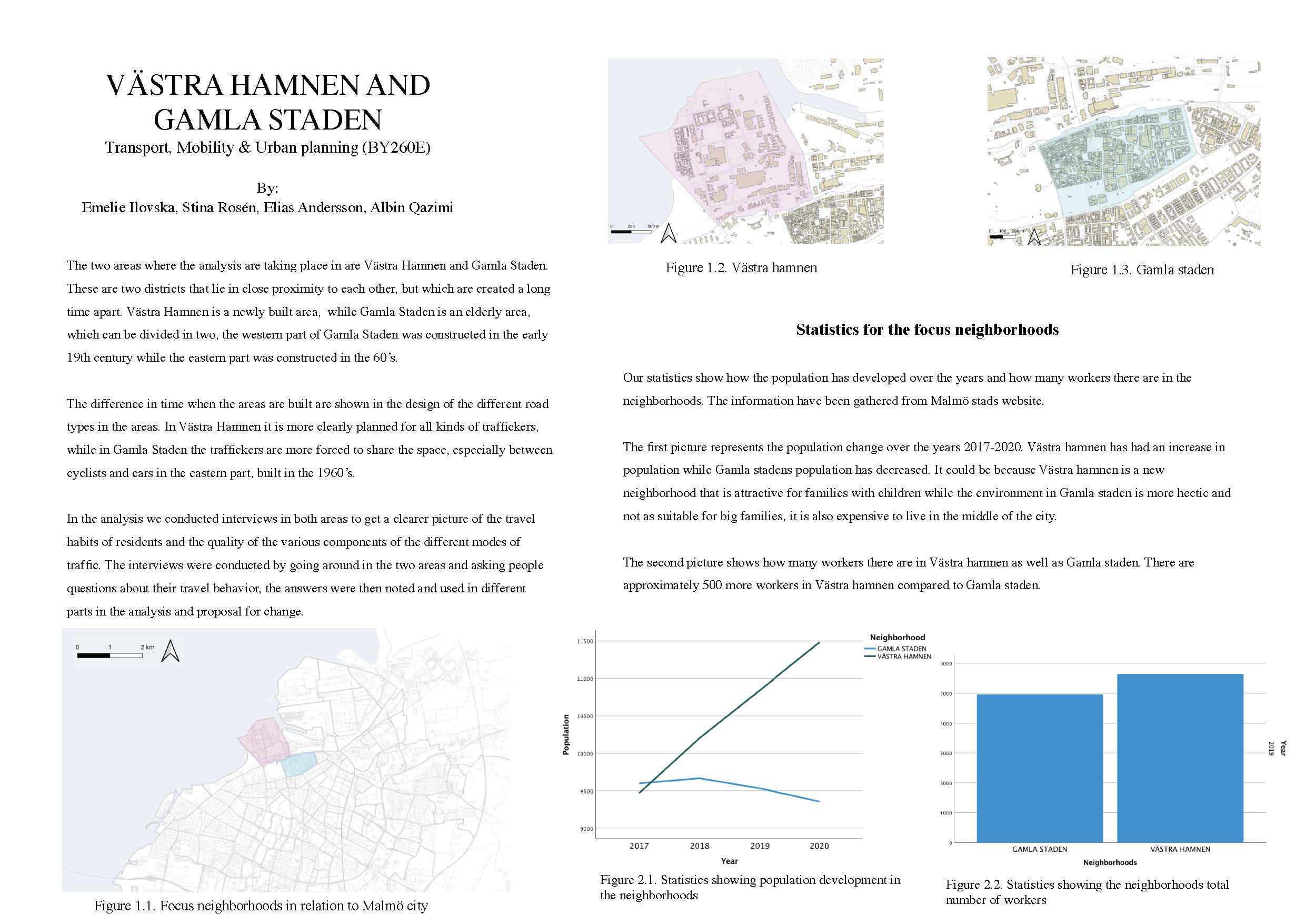 |
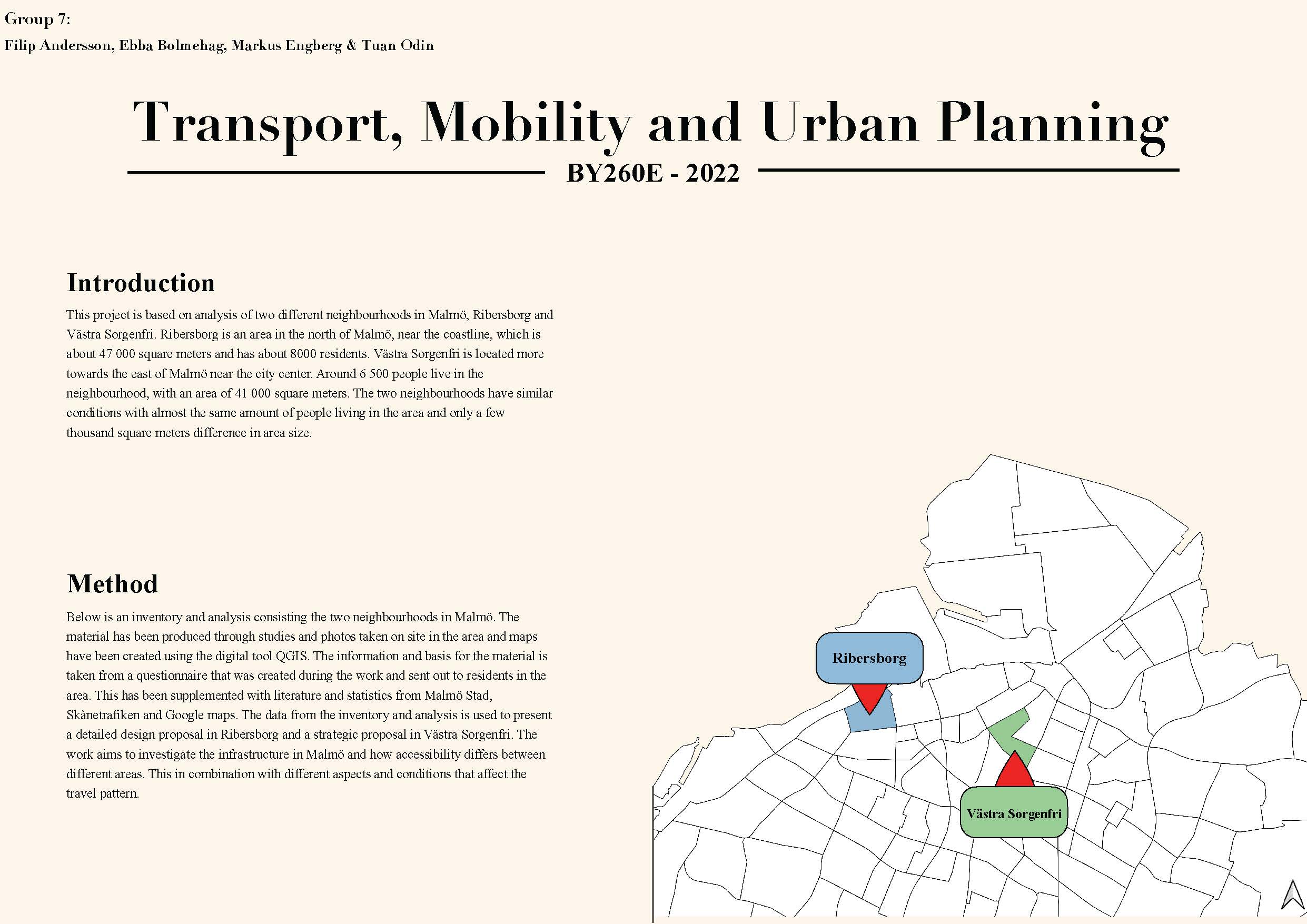 |
| Group 6: Västra Hamnen and Gamla Staden
|
Group 7:Ribersborg and Västra Sorgenfri |
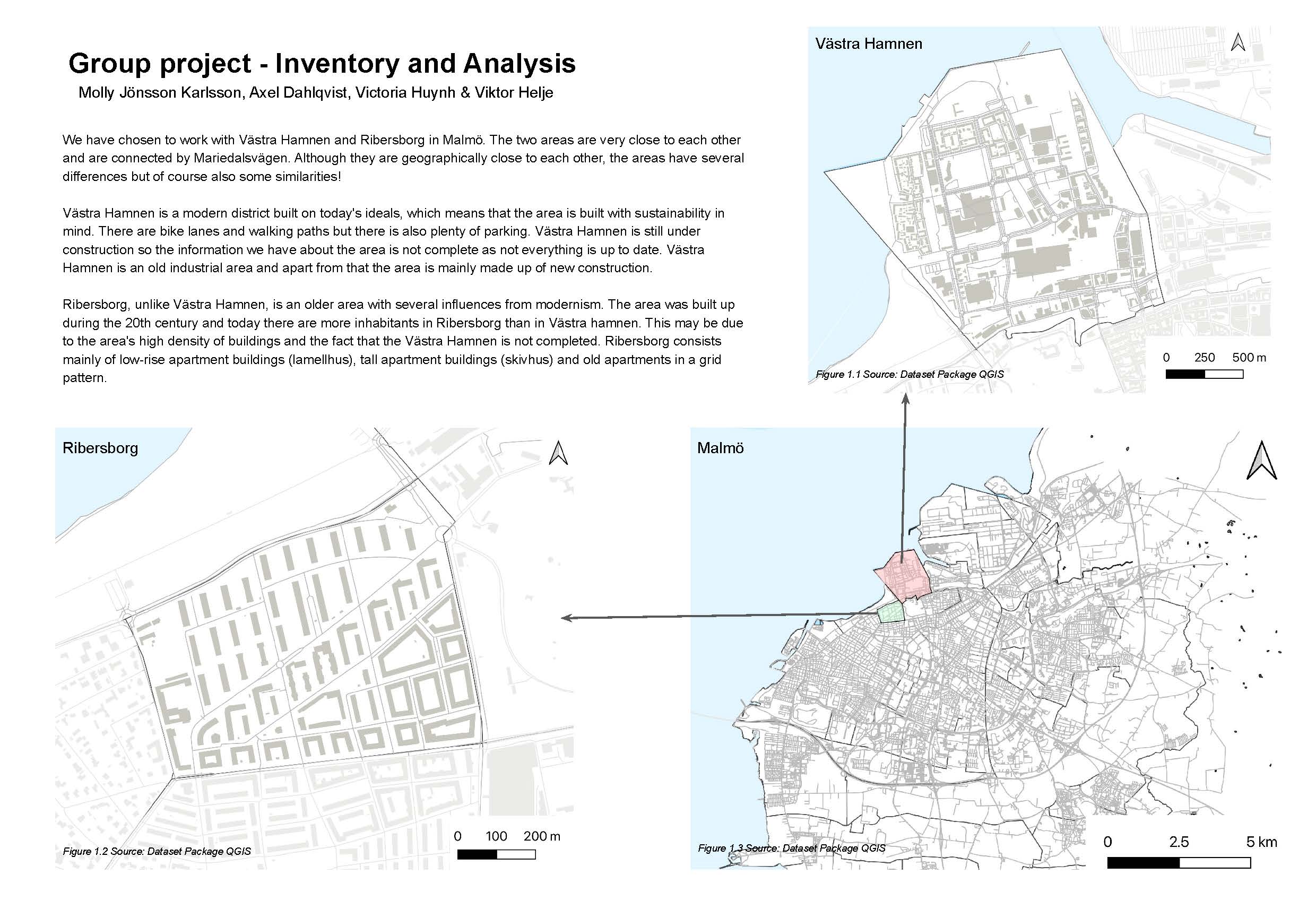 |
|
| Group 11: Västra Hemnen and Ribersborg
|
